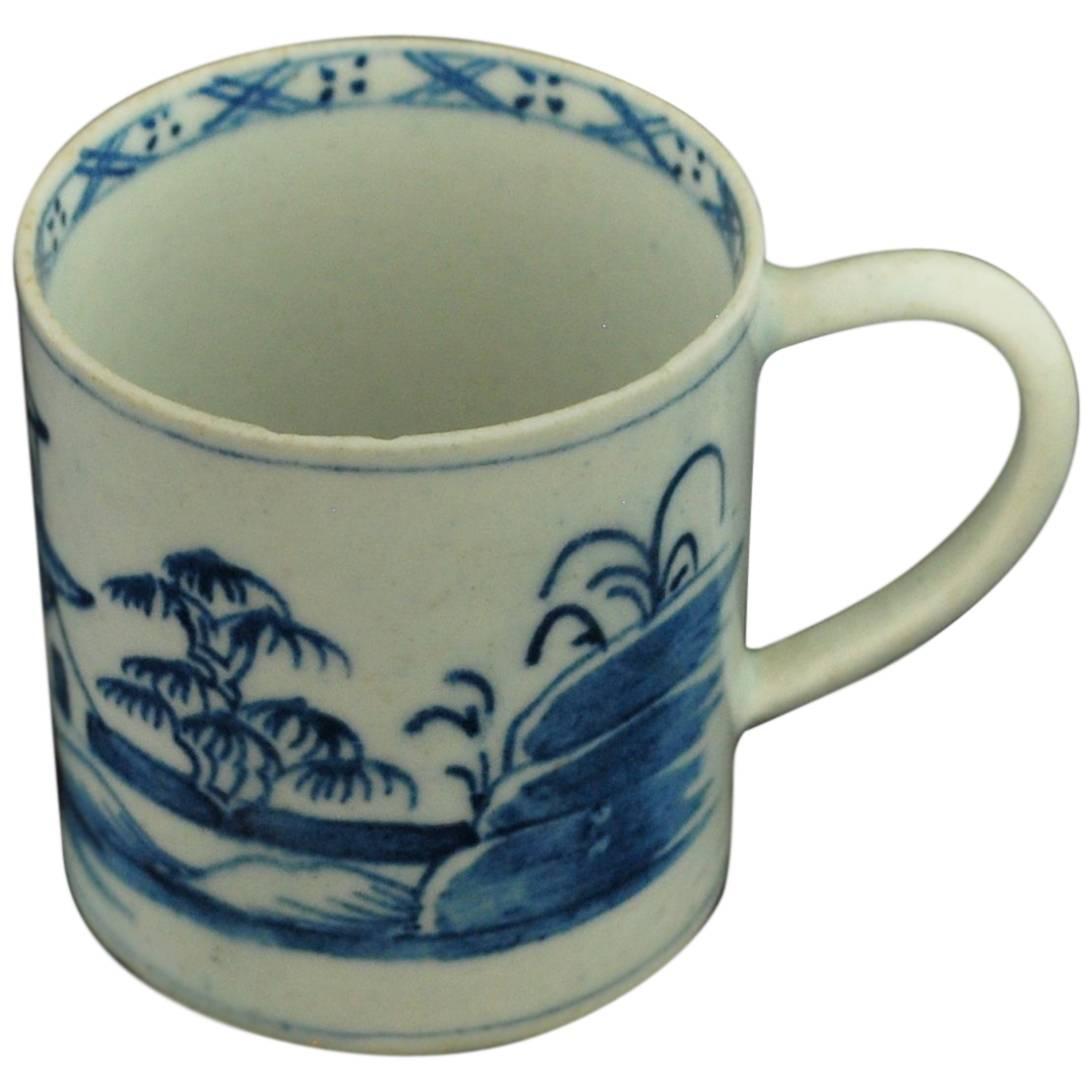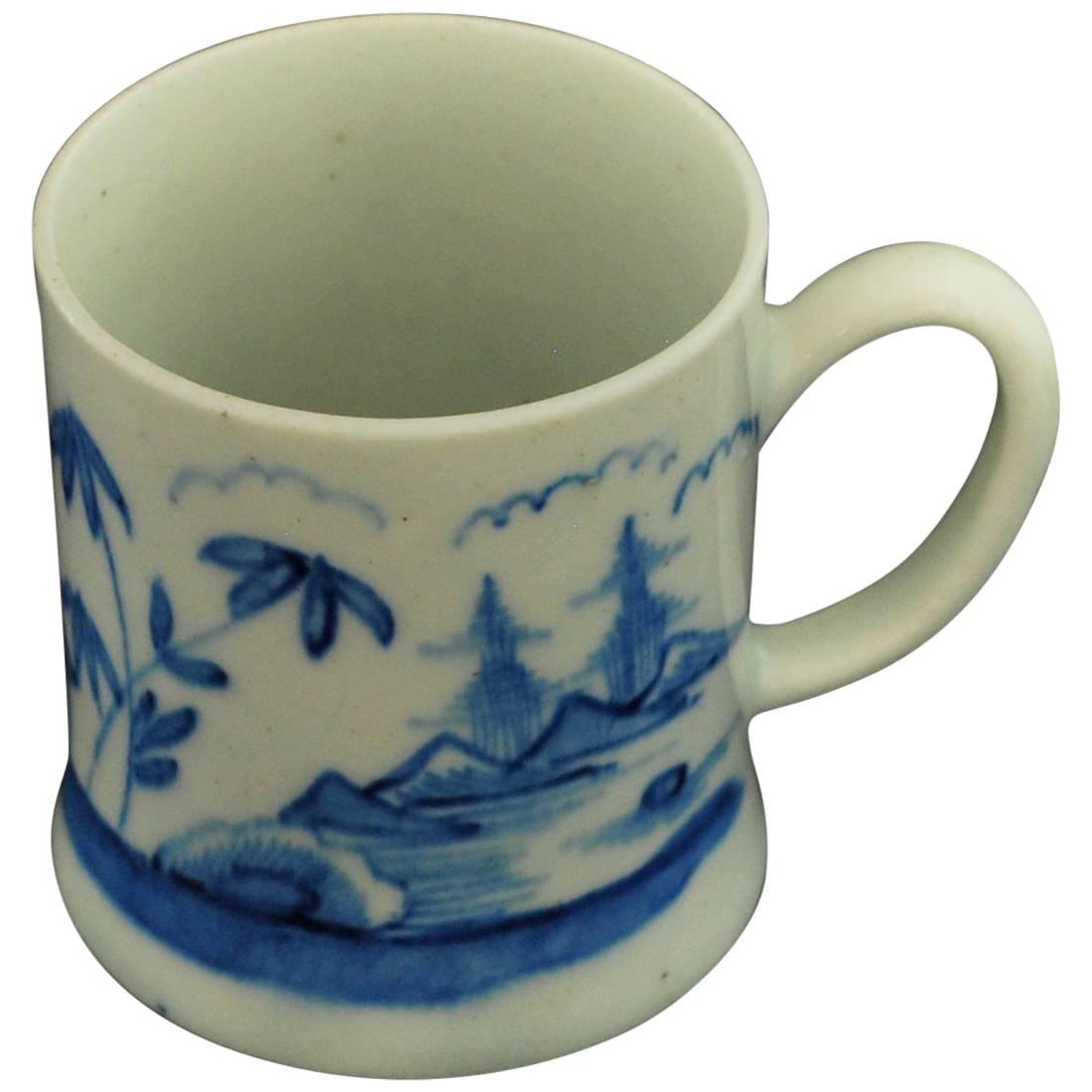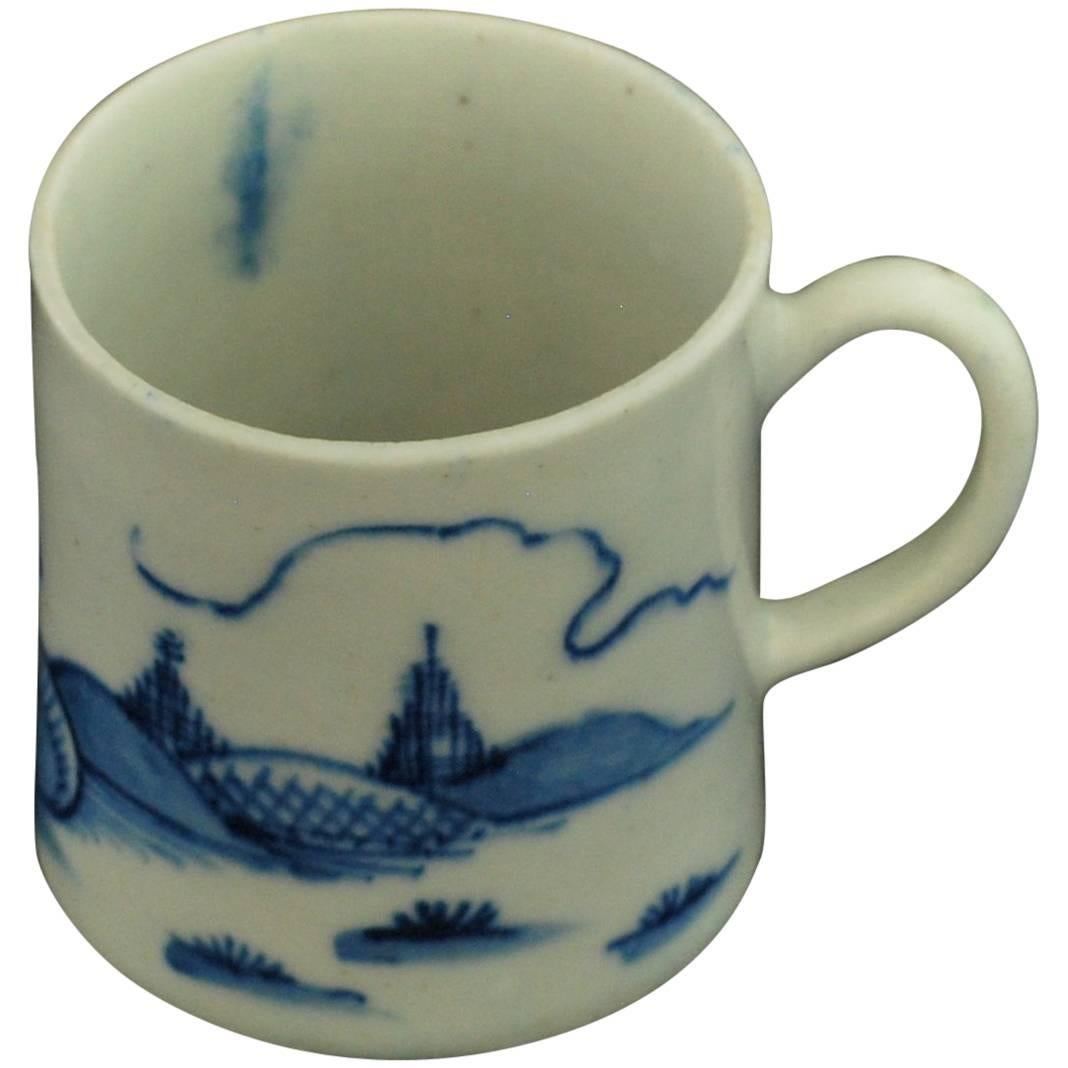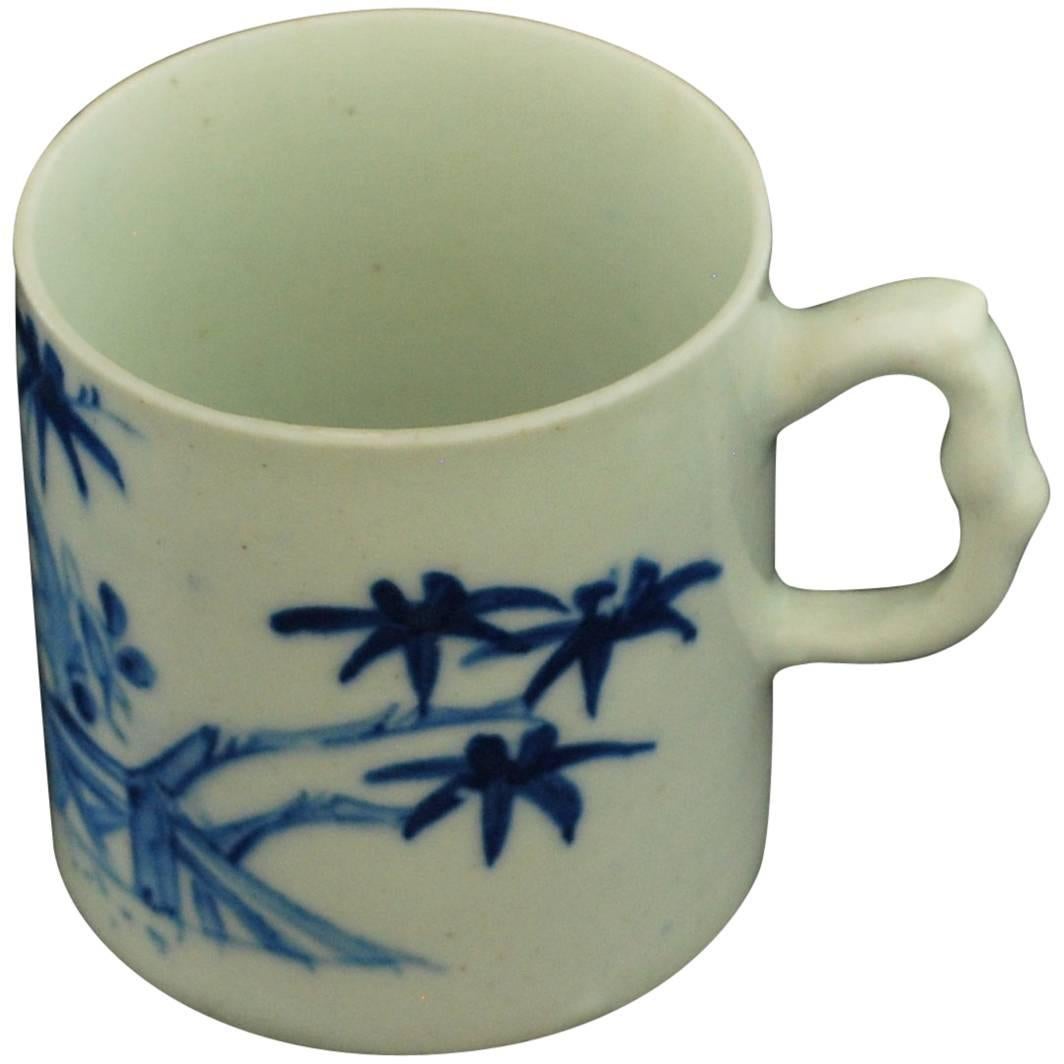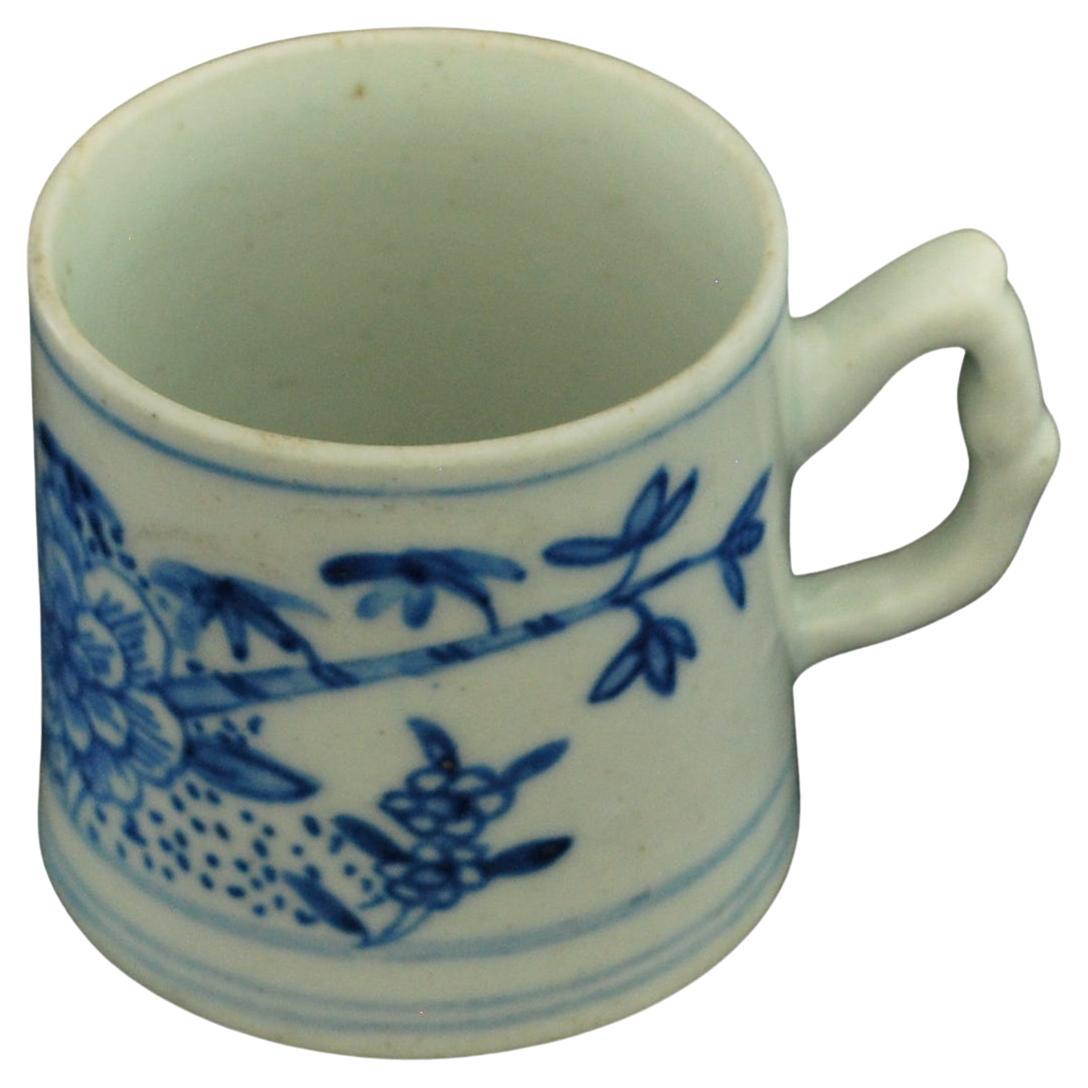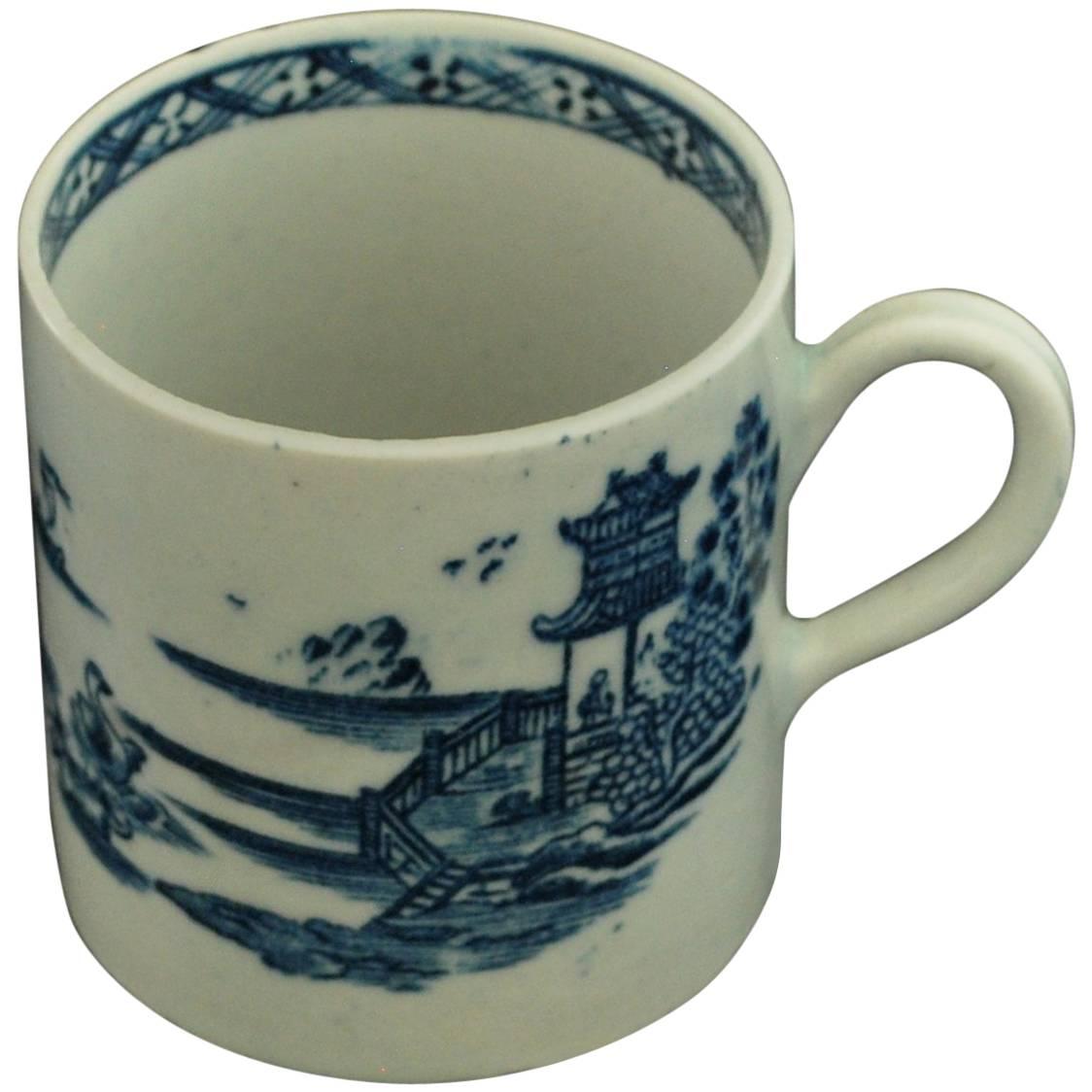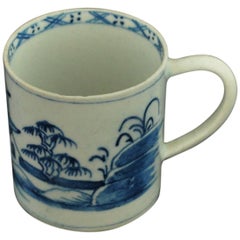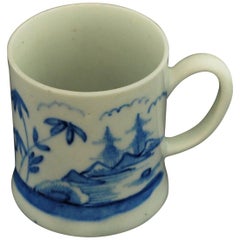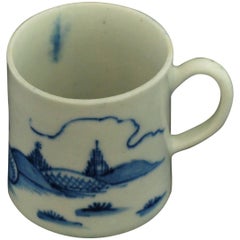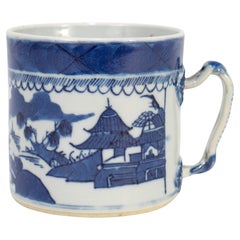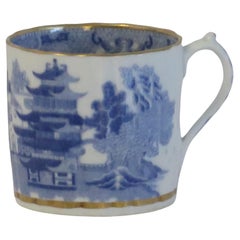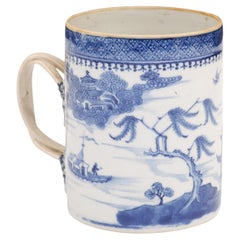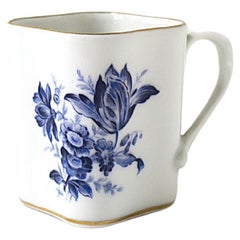Items Similar to Coffee Can, Blue and White "Desirable Residence", Bow Porcelain, circa 1758
Want more images or videos?
Request additional images or videos from the seller
1 of 7
Coffee Can, Blue and White "Desirable Residence", Bow Porcelain, circa 1758
$1,190
$1,70030% Off
£903.90
£1,291.2930% Off
€1,041.60
€1,48830% Off
CA$1,675.81
CA$2,394.0230% Off
A$1,857.89
A$2,654.1330% Off
CHF 976.39
CHF 1,394.8530% Off
MX$22,737.51
MX$32,482.1530% Off
NOK 12,194.15
NOK 17,420.2230% Off
SEK 11,445.43
SEK 16,350.6230% Off
DKK 7,774.91
DKK 11,107.0230% Off
About the Item
Painted in under-glaze blue with the Desirable Residence pattern, featuring telegraph poles, and unusual feature for this period.
Prov: Taylor Collection; Mercury Antiques Melbourne.
- Creator:Bow Porcelain (Maker)
- Dimensions:Height: 2.2 in (5.59 cm)Diameter: 7 in (17.78 cm)
- Style:Chinoiserie (Of the Period)
- Materials and Techniques:
- Place of Origin:
- Period:
- Date of Manufacture:circa 1758
- Condition:
- Seller Location:Melbourne, AU
- Reference Number:Seller: 49621stDibs: LU315139225791
About the Seller
5.0
Vetted Professional Seller
Every seller passes strict standards for authenticity and reliability
Established in 2005
1stDibs seller since 2017
79 sales on 1stDibs
Typical response time: <1 hour
- ShippingRetrieving quote...Shipping from: Melbourne, Australia
- Return Policy
Authenticity Guarantee
In the unlikely event there’s an issue with an item’s authenticity, contact us within 1 year for a full refund. DetailsMoney-Back Guarantee
If your item is not as described, is damaged in transit, or does not arrive, contact us within 7 days for a full refund. Details24-Hour Cancellation
You have a 24-hour grace period in which to reconsider your purchase, with no questions asked.Vetted Professional Sellers
Our world-class sellers must adhere to strict standards for service and quality, maintaining the integrity of our listings.Price-Match Guarantee
If you find that a seller listed the same item for a lower price elsewhere, we’ll match it.Trusted Global Delivery
Our best-in-class carrier network provides specialized shipping options worldwide, including custom delivery.More From This Seller
View AllCoffee Can, Blue and White "Residence", Bow Porcelain, circa 1755
By Bow Porcelain
Located in Melbourne, Victoria
An early coffee can, painted in under-glaze blue with a large residence in a Chinese landscape.
Prov: Taylor Collection; Watney Collection.
Category
Antique Mid-18th Century English Chinoiserie Porcelain
Materials
Porcelain
$700 Sale Price
30% Off
Coffee Can, Blue and White "Bamboo and Pagoda", Bow Porcelain, circa 1751
By Bow Porcelain
Located in Melbourne, Victoria
An early coffee can, painted under the glaze with Bamboo and a pagoda. Underglaze B mark.
Provenance: Taylor Collection; Sutherland; Aubrey Toppin; Charles Dyson.
Category
Antique Mid-18th Century English Chinoiserie Porcelain
Materials
Porcelain
$2,940 Sale Price
30% Off
Coffee Can, Blue and White "Ribbon Landscape", Bow Porcelain, circa 1753
By Bow Porcelain
Located in Melbourne, Victoria
An early coffee can, painted in under-glaze blue with a Chinese landscape.
Prov: Taylor Collection; Roderick Jellicoe.
Category
Antique Mid-18th Century English Chinoiserie Porcelain
Materials
Porcelain
$840 Sale Price
30% Off
Coffee Can, Blue and White "Scholar's Rock" Bow Porcelain, circa 1751
By Bow Porcelain
Located in Melbourne, Victoria
An early coffee can, painted under the glaze with a Scholar’s Rock and associated items.
Prov. Taylor Collection; Stockspring Antiques.
Category
Antique Mid-18th Century English Chinoiserie Porcelain
Materials
Porcelain
$1,470 Sale Price
30% Off
Coffee Can Blue and White "Peony & Bamboo" Bow Porcelain, circa 1754
By Bow Porcelain
Located in Melbourne, Victoria
An early coffee can, painted in under-glaze blue with peonies and bamboo. The painting links with the William Pether 1754 jug.
The decoration is taken directly from Chinese examples, and was intended to compete with Chinese imports.
Peonies and bamboo are both commonly depicted in Chinese porcelain decoration. Peonies, also known as the "king of flowers," are often depicted in Chinese art as a symbol of wealth, nobility, and good fortune. Bamboo, on the other hand, is a symbol of integrity, resilience, and longevity. Together, peonies and bamboo are often used to symbolize the harmonious balance between wealth and integrity.
Chinese porcelain with peony...
Category
Antique Mid-18th Century English Chinoiserie Porcelain
Materials
Porcelain
Coffee Can, Blue and White "Swans & Pagoda", Bow Porcelain, circa 1765
By Bow Porcelain
Located in Melbourne, Victoria
Decorated with an under-glaze blue print of a Chinese landscape, featuring a man at the window of a pagoda, admiring swans on the lake.
Bow didn't produce very much in the way of ...
Category
Antique Mid-18th Century English Chinoiserie Porcelain
Materials
Porcelain
$1,750 Sale Price
30% Off
You May Also Like
Antique Chinese Export Blue & White Canton Porcelain Coffee Cann / Chocolate Cup
Located in Philadelphia, PA
A fine antique Chinese Export porcelain cann or handled cup.
In the Canton pattern.
Decorated in underglaze blue with a mountainous Chinese village with houses, mountains, foliage,...
Category
Antique 19th Century Chinese Chinese Export Ceramics
Materials
Porcelain
Miles Mason Porcelain Coffee Can Blue & White Broseley Gilded Ptn 50, circa 1808
By Miles Mason Porcelain
Located in Lincoln, Lincolnshire
This is a porcelain blue and white, gilded Coffee Can made by Miles Mason (Mason's), Staffordshire Potteries, in the early 19th century George 111rd period, circa 1805-1810.
The piece is well potted with vertical flutes, a slightly wavy rim and the loop handle with the distinctive thumb rest spur.
The can is decorated in the under-glaze blue printed Pagoda or Broseley, chinoiserie Willow pattern, (sometimes called Boy at the Door pattern). The piece is also richly gilded in Miles Mason pattern 50 as illustrated on Page 78 of the book; Miles Mason Patterns and Shapes, produced by the Mason's Collectors' Club. The coffee can is also hand gilded around the rims and on the outer handle.
The piece is fully marked to the base with an under-glaze blue printed square seal mark (pseudo Chinese) as illustrated on page 92 of the above publication.
Overall a very good Georgian coffee can...
Category
Antique Early 19th Century English Chinoiserie Ceramics
Materials
Porcelain
18th Century Chinese Export Blue and White Mug with Handle
Located in Atlanta, GA
18th Century Chinese Export Blue and White Mug with Handle
Category
Antique 18th Century Chinese Pottery
Materials
Porcelain
Richard Ginori Italian Rococo Blue White Porcelain Coffee Espresso Cup
By Richard Ginori
Located in New York, NY
A beautiful Italian blue and white porcelain coffee espresso cup, in the Rococo style, by designer, Richard Ginori, circa early to mid-20th century, Italy. This demitasse cup is whit...
Category
Mid-20th Century Italian Rococo Barware
Materials
Porcelain
Vienna Mid-19th Century Porcelain Cup with Dish White and Blue
Located in Brescia, IT
This is a small masterpiece of craftsmanship: the fine porcelain is designed with floral and natural scenes, rich in detail.
A piece for refined collectors or useful to start a coll...
Category
Antique Mid-19th Century Austrian Baroque Porcelain
Materials
Porcelain
Vienna Mid-19th Century Porcelain Cup with Dish White and Blue
Located in Brescia, IT
This is a small masterpiece of craftsmanship: the fine porcelain is designed with floral and natural scenes, rich in detail.
A piece for refined collectors or useful to start a coll...
Category
Antique Mid-19th Century Austrian Baroque Porcelain
Materials
Porcelain
More Ways To Browse
Plates Marie Antoinette
Royal Copenhagen Christmas Plates
Royal Crown Derby Gold
Staffordshire Dishes
Thomas Vines
Used Dr Dish
Versace Ceramics
Wiinblad Christmas Plates
1820 Coalport
Antique Chinese Dessert Plate
Antique Davenport China
Art Nouveau Limoges Porcelain
Meissen England
Meissen Large Group
Minton Blue Gold
Porcelain Breakfast Set
Richard Ginori Coffee
Spode Green
